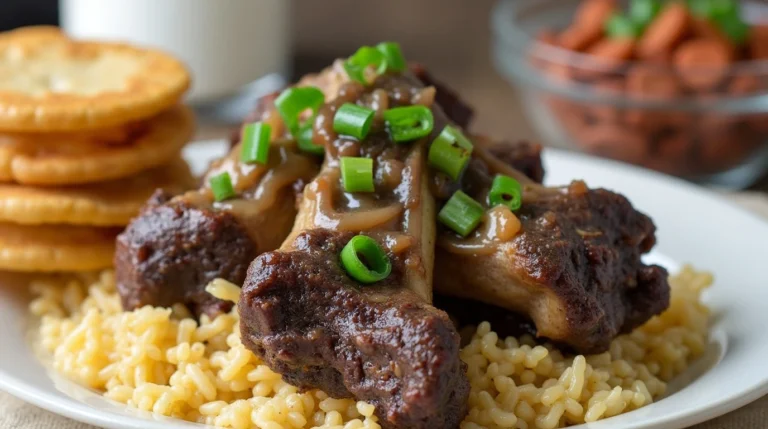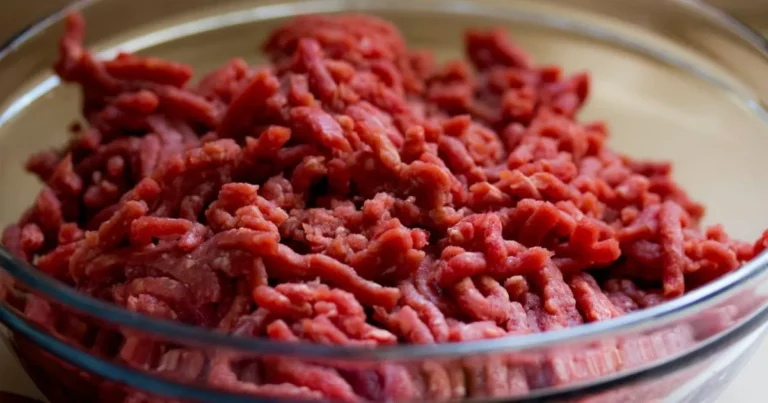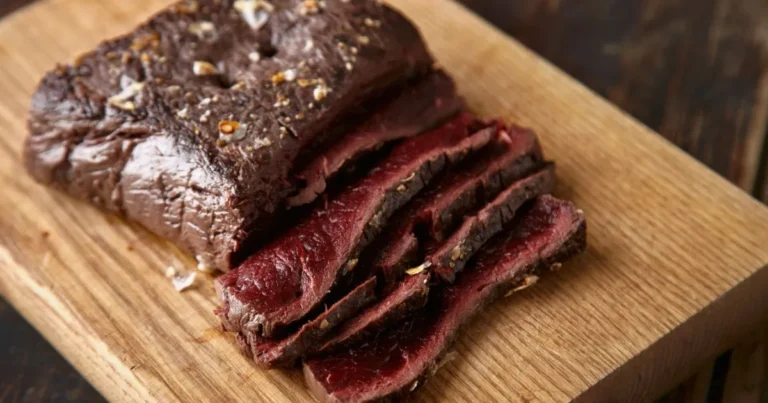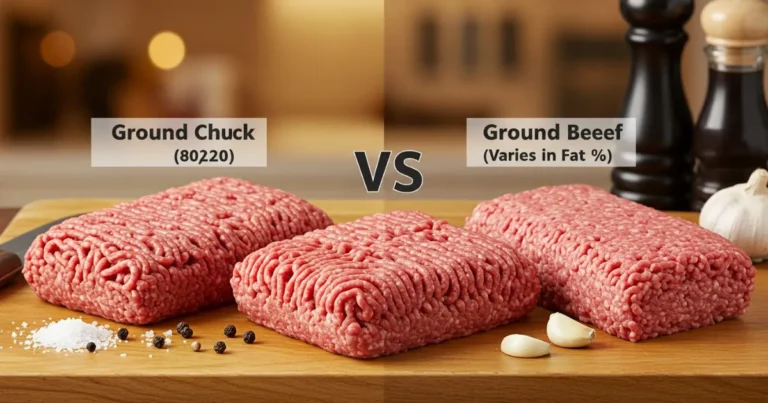6 Simple Techniques to Make Thin-Sliced Beef Extra Juicy
Introduction
Cooking thin-sliced beef can sometimes feel like a tricky task—get it right, and you’ll enjoy a tender, juicy bite that melts in your mouth.
But get it wrong, and you may end up with a dry, tough cut that’s far from appetizing. If you’ve ever struggled with thin-sliced beef that doesn’t live up to expectations, you’re not alone.
Fortunately, with a few simple techniques, you can ensure that your thin-sliced beef stays juicy and flavorful every time.
In this article, you’ll discover six easy techniques to transform your thin-sliced beef into a tender, juicy masterpiece. Whether you’re cooking stir-fry, grilling, or searing beef, these methods will work wonders, making your dish a hit with everyone at the table. So, let’s dive into these techniques that will help you take your cooking skills to the next level.
Table of Contents
1. Choose the Right Cut of Beef
Why Cut Matters for Juiciness
Before you even start cooking, selecting the right cut of beef is the first step toward achieving a juicy and tender result. Not all cuts of beef are suited for thin slicing, and some will yield much better results than others when cooked.
Certain beef cuts are naturally more tender and juicy due to their marbling (the fat interspersed within the meat), while others are leaner and require a bit more care to stay juicy. When it comes to thin-sliced beef, you want a cut that holds up to quick cooking methods without drying out.
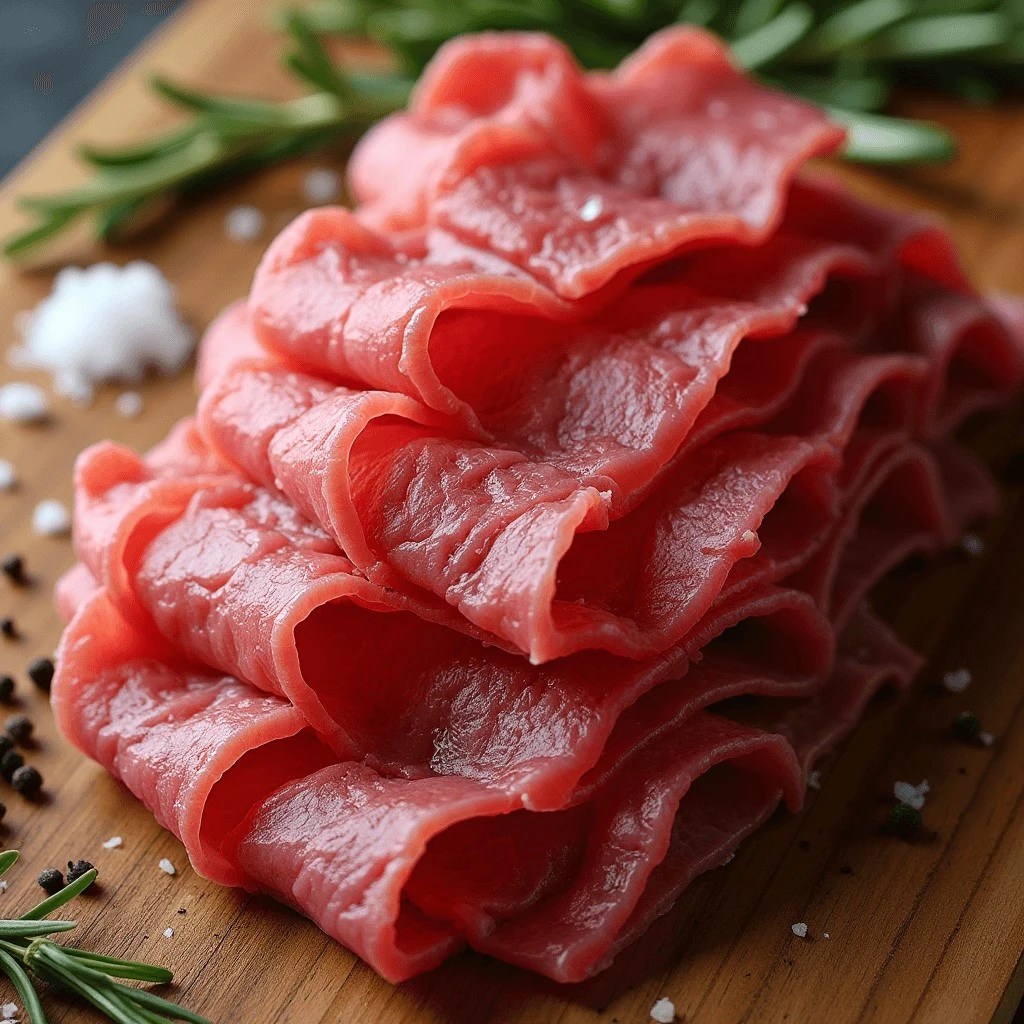
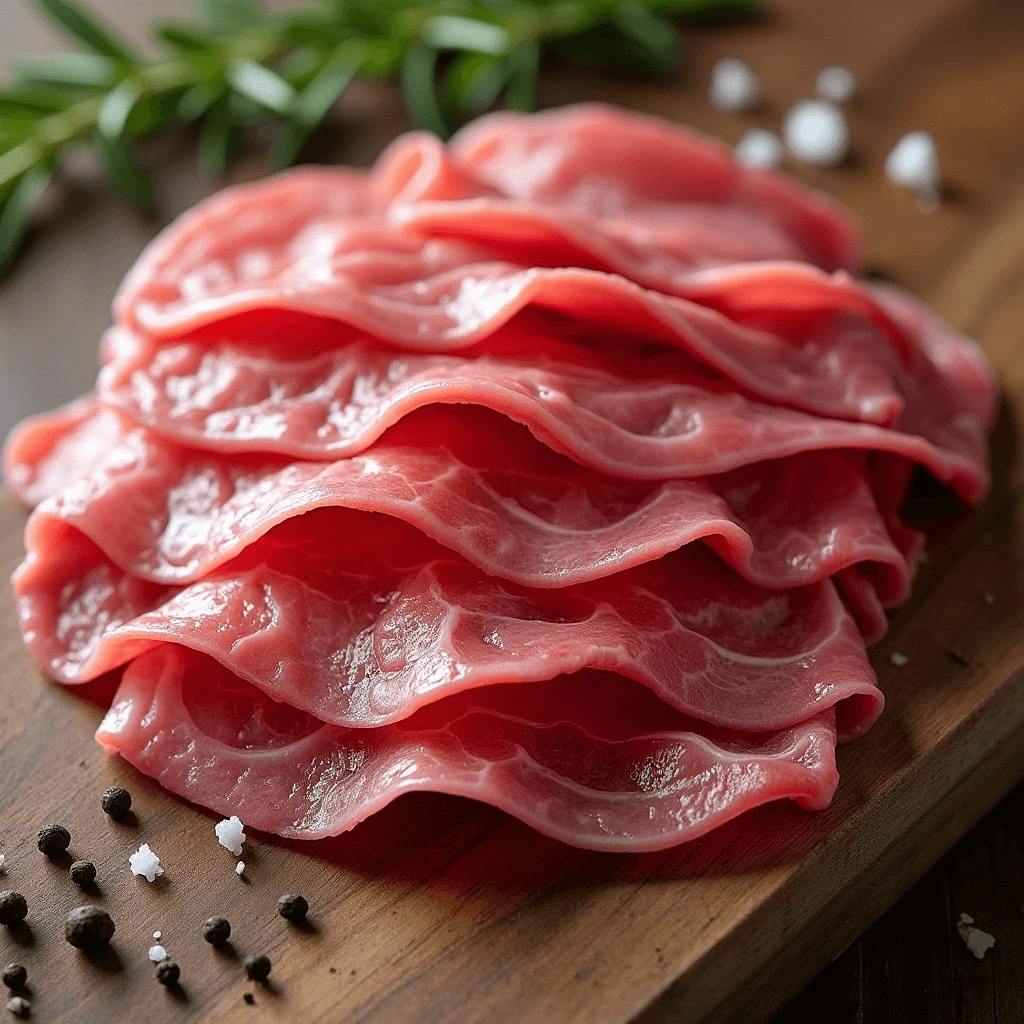
Best Cuts for Thin-Sliced Beef:
- Ribeye – Known for its high marbling, ribeye is one of the best cuts for juicy, thin-sliced beef. The fat helps keep the meat tender and flavorful, even with fast cooking methods like stir-frying or grilling.
- Sirloin – This cut is leaner but still relatively tender. When sliced thin and cooked correctly, sirloin can be just as juicy and flavorful as fattier cuts.
- Flank Steak – A popular choice for dishes like stir-fry, flank steak is a bit tougher than ribeye but works great when marinated and cooked quickly over high heat.
- Short Rib (Boneless) – If you’re looking for a beef cut that’s loaded with fat, boneless short ribs are a fantastic choice. The extra fat content helps keep the beef juicy and tender as it cooks.
Pro Tip: To get the best results, slice the beef against the grain (the direction of the muscle fibers). This helps to break down the fibers, making the meat more tender.
2. Master the Art of Marination
The Role of Marinades in Tenderizing Beef
Marinating thin-sliced beef not only infuses it with flavor but also helps to tenderize the meat. This is particularly important for tougher cuts like flank steak, which can benefit greatly from a flavorful marinade. The acid in marinades (such as vinegar or citrus) helps to break down the muscle fibers, making the beef more tender and easier to chew.
But marination isn’t just about flavor—it’s a technique to lock in moisture and enhance the beef’s juiciness. The right balance of ingredients will make all the difference.
Key Ingredients for a Juicy Marinade:
| Ingredient | Purpose |
|---|---|
| Soy Sauce | Adds umami and helps the beef absorb flavor. |
| Rice Vinegar | The acid helps to tenderize the beef while adding a subtle tang. |
| Brown Sugar | Balances out the salty and acidic elements, also helping with caramelization. |
| Garlic & Ginger | Infuse bold, aromatic flavors that complement the beef. |
| Sesame Oil | Adds a rich, nutty flavor that enhances the beef’s natural taste. |
Pro Tip: For best results, let your beef marinate for at least 30 minutes. For maximum flavor, marinate up to 24 hours in the refrigerator. Just make sure not to over-marinate, as this can cause the meat to become mushy.
3. Use the Right Cooking Method
High Heat for Quick Searing
When it comes to thin-sliced beef, the key to juiciness is cooking it quickly over high heat. Thin slices of beef cook rapidly, and if you’re not careful, they can easily become overcooked and dry. By using the right cooking technique, you’ll be able to lock in moisture while achieving that perfect sear.
Here are a few methods that work best for thin-sliced beef:
Best Cooking Techniques:
- Stir-frying – Stir-frying is a fantastic method for cooking thin-sliced beef quickly. The high heat of the pan seals the meat and locks in juices while giving it a crisp exterior.
- Grilling – Grilling adds a nice smoky flavor to the beef while maintaining its juiciness. Just be sure not to overcook it, as thin slices can dry out quickly on the grill.
- Pan-searing – This technique allows you to create a beautiful caramelized crust on the beef while keeping the interior juicy and tender.
- Sous Vide – If you have the equipment, sous vide is an excellent way to cook thin-sliced beef precisely. The low and slow method ensures that the beef retains all of its natural juices.
Pro Tip: For stir-frying or pan-searing, use a non-stick skillet or a well-seasoned cast iron pan to avoid sticking and help the beef cook evenly.
4. Control the Cooking Temperature
Why Temperature Matters
One of the biggest mistakes people make when cooking thin-sliced beef is not paying attention to the cooking temperature. Overcooking is a surefire way to end up with dry, tough beef. For thin slices, you need to cook the beef quickly at a high temperature to ensure the outside is browned while keeping the inside moist and tender.
Ideal Internal Temperature:
| Doneness Level | Temperature (°F) | Temperature (°C) |
|---|---|---|
| Medium-Rare | 130–135°F | 54–57°C |
| Medium | 135–145°F | 57–63°C |
| Well-Done | 150°F+ | 65°C+ |
Pro Tip: Use a meat thermometer to monitor the internal temperature of your beef. Since thin slices cook so quickly, this tool can be a lifesaver.
5. Let It Rest Before Serving
Why Resting Is Crucial
Once your beef is cooked to perfection, don’t cut into it right away! Allowing your thin-sliced beef to rest for a few minutes helps the juices redistribute throughout the meat. If you cut into it immediately, those juices will run out, leaving the beef dry. Resting ensures that every bite is as juicy and tender as possible.
How to Rest Beef:
- Let your beef rest for 5–10 minutes after cooking.
- Cover the beef loosely with foil to help retain warmth while it rests.
Pro Tip: The larger the cut, the longer the resting time. Thin slices don’t need as much time to rest, but it’s still important to give them a few minutes.
6. Add Moisture-Boosting Sauces
Sauces That Enhance Juiciness
A well-made sauce can take your thin-sliced beef from good to great. Sauces not only add extra flavor but also help to lock in moisture, ensuring that your beef stays juicy.
Here are some of the best sauce options for thin-sliced beef:
Best Sauce Pairings for Thin-Sliced Beef:
- Teriyaki Sauce – This sweet and savory sauce adds a rich, glossy finish to your beef.
- Garlic Butter Sauce – Rich and decadent, garlic butter brings a savory, buttery flavor to the beef.
- Chimichurri – A fresh, zesty sauce made from parsley, garlic, and vinegar, perfect for adding brightness to the beef.
- Korean Bulgogi Sauce – A sweet, garlicky, and umami-rich sauce that pairs beautifully with beef.
Pro Tip: Drizzle your sauce over the beef just before serving to keep the flavor fresh and vibrant.
FAQs: Everything You Need to Know About Thin-Sliced Beef
1. What is the best way to slice beef thinly at home?
To slice beef thinly, freeze the beef for 30–45 minutes until firm. Then, use a sharp knife and slice against the grain for the best texture.
2. How do I prevent thin-sliced beef from drying out?
Ensure you’re cooking at high heat for a short time, and avoid overcooking. Marinating the beef also helps keep it juicy.
3. Can I use frozen beef for thin slicing?
Yes, partially frozen beef is easier to slice thinly, and it’s perfect for dishes like stir-fries.
4. What are the best seasonings for thin-sliced beef?
Salt, pepper, garlic powder, soy sauce, and sesame oil work wonderfully to bring out the best flavors in thin-sliced beef.
5. How long should I marinate thin-sliced beef?
For the best results, marinate your beef for at least 30 minutes, but up to 24 hours for a more intense flavor.
Conclusion: Elevate Your Thin-Sliced Beef with These Simple Techniques
Achieving juicy, tender thin-sliced beef doesn’t have to be difficult. By choosing the right cut, marinating properly, using high heat for quick cooking, and adding moisture-boosting sauces, you can ensure that every bite of your beef is full of flavor and juiciness. Follow these six simple techniques, and you’ll be able to cook thin-sliced beef like a pro every time.
Now that you have all the knowledge you need to cook thin-sliced beef perfectly, why not try it out yourself? Pick your favorite cut, get your marinade ready, and start cooking today!


